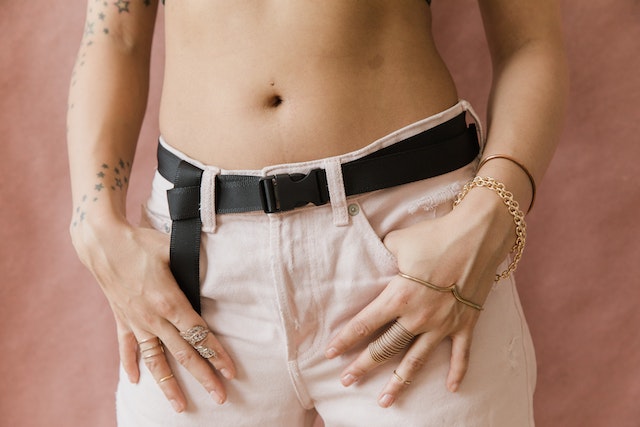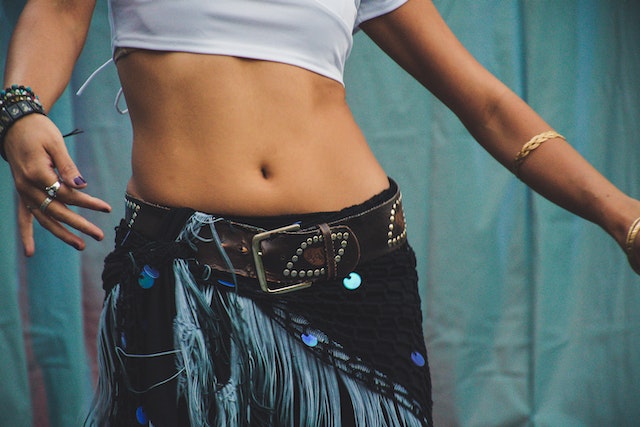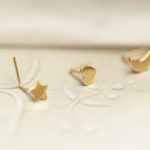Ring
When can I have my belly button ring replaced?
Because the navel is sensitive, it can take a while for the piercings to fully heal. It is nerve-rich, so changing jewelry too quickly can cause irritation and complications.
The question, “When can I replace my belly ring?” doesn’t have an exact answer. You should wait for the piercings to fully heal before you attempt to fix them. This will avoid any complications. It is a good idea to visit your dermatologist or piercer to ensure everything is in order before you decide to change the ring.
Table of Contents
Wait For Piercing To Heal
The skin around the ring may become sensitive and swollen several weeks after has been pierced the belly button. You may also experience mild bleeding or discharge. For your recovery, it is important to practice good hygiene and be patient.
There are many stages involved in the process of skin healing. The piercing might look fine after a few weeks. The swelling will likely return over the next month and you may see the liquid around the ring.
Most piercers recommend that you wait at least three months before changing your stomach ring. It can take longer depending on how your skin reacts to aftercare and hygiene. If you allow your skin to heal, changing jewelry will be painless and quick.
Your skin is your first indicator that you’re ready to replace your ring. You can remove the ring if the skin around it is the same color as your belly for at least two weeks.
Next, use a tissue to gently press the piercing. It is important to continue for several weeks if there is any pus, lymph, or discharge. You should see a doctor if the secretion around your ring is unusually colored or has an unpleasant smell. These are common signs of infection.
A lack of pain when touching or moving the belly ring is the final sign that your recovery is complete. Grab the piercing gently with your fingers. Then, slide it up or down for a few millimeters. You should wait until the jewelry is removed from the skin.
How to Change Your Belly Ring
After you have changed the belly ring, disinfect the jewelry. You can soak it in the rubbing alcohol for between 10 and 15 minutes. Use antibacterial soap to clean your hands and then dry it with a paper towel.
Before removing the ring, clean your navel with saline. Depending on which type of jewelry you have, you will need to either unscrew the ball at the top to the left or slide it off. Remove the ring carefully and wash your skin with soap.
Don’t force the piercing if you are having difficulty. You can cause irritation and damage to the skin by removing jewelry too quickly. It is best to wait a week if you feel any discomfort or pain. You can also take your new jewelry to a studio for professional replacement.
You can remove the belly ring easily by washing it in alcohol and drying it with a towel. Then, slide the new jewelry in place of your old one. To prevent the ring from falling out, make sure you hold the ball tightly.
Clean your belly again and make sure you check that the jewelry is properly set up. Also, be sure to check for any kinks or looseness. You can carry on with your usual piercing care if everything works well and there isn’t any swelling or redness in the next days.
Take care of your new ring
You will need to care for your belly ring for several weeks after replacing it. It should be rinsed at least twice daily with saline. You can also disinfect it with alcohol occasionally. Shower gels should not be used when you take a bath. You can wash your navel with just lukewarm water.
A sea salt solution can be made by mixing 0.25 teaspoon of pure sea salt with distilled water. To remove any secretions or lymph from the metal surface, soak a cotton pad in the mixture every morning and night.
Some piercers suggest that you move the ring from time to time. Others recommend that it be left alone for the first few weeks.
No matter what your opinion, resist the urge to change your belly ring too often for aesthetic reasons. It can cause skin irritation so it is best to keep the same jewelry for at most a few months.
Many belly rings that are sold online can contain nickel in large amounts, which can cause allergic reactions. Ask your piercer to immediately remove the ring if you have an allergic reaction.
Itching and redness can be caused by modern jewelry that contains zircons, sequins, and crystals. It is best to choose titanium or surgical steel for your ring. Itching can be treated by adding tea tree oil to the saline solution. Avoid baby oils, balms and excessively greasy creams.
Examine for the first signs of infection
Even though you’ve sterilized the jewelry and taken all precautions, an infection can quickly occur after changing the belly band. It takes time for the navel to heal and it can be difficult to determine if the skin is fully healed.
Your belly button may be affected if you feel pain while touching the ring or moving it.
Apply a warm compress to the affected area before you visit the doctor. You can heat a towel in saline and soak it in. To drain the pus, wrap the wrap around the piercing for 15 minutes. It is important to reduce swelling.
Even if you don’t feel sick, you can still get high fevers and experience the flu symptoms. Don’t try to pull off the ring or remove it when the skin is reddened and swelling. Use the antibacterial cream instead to resolve the problem.
Antibacterial ointments should be avoided as they can cause the infection to spread quicker and become more greasy. Do not forget to make an appointment with your doctor as soon as you can.
Get Rid Of All Possible Problems with a New Ring
You can avoid complications by changing your jewelry in a variety of ways, apart from regular cleaning of your belly button ring. Wear loose, comfortable, and clean natural fiber clothing.
Tight jeans and high-waist clothing are not recommended as they can cause injury to the skin and may result in bleeding. Remember that rough fabrics that rub against the ring will slow down the healing process.
For a time, avoid swimming in lakes and on beaches. Even if the bandage is used to cover the piercing, unclean water can cause infection. Badging with strangers can increase the chance of contracting bacteria that could lead to serious health issues.
A wrong choice in jewelry can cause a reaction. Because micro-abrasions can cause skin irritation and infection, it is important to choose the right gauge when replacing your belly button rings with thicker ones. To avoid skin irritation, don’t choose a heavy ring that has a dangling charm.
You should not lubricate the skin with perfume creams, scented lotions, or similar cosmetics. Many of these products contain alcohol, as well as other chemicals that could irritate your skin. According to some piercers, hydrogen peroxide can also trigger a reaction.
To keep the area clean, you only need mild antibacterial soap, water, and saline solution. Don’t forget to remember that too much cleaning can make your skin more sensitive than if you do not clean enough. It can dry out the skin, cause itching and cracking, and slow down healing.
A severe problem with the unhealed stomach button could result in the need to remove the piercing. Then, wait for the skin to heal itself. You will then need to repeat the entire piercing procedure. It is best to avoid any problems by taking proper care.
Summary
You may need to wait several months for the belly button piercing to fully heal. The ring can be changed once the wound has healed. It is easy and painless to do this. Be aware of signs and symptoms of infection, and make sure to treat the belly button immediately.






